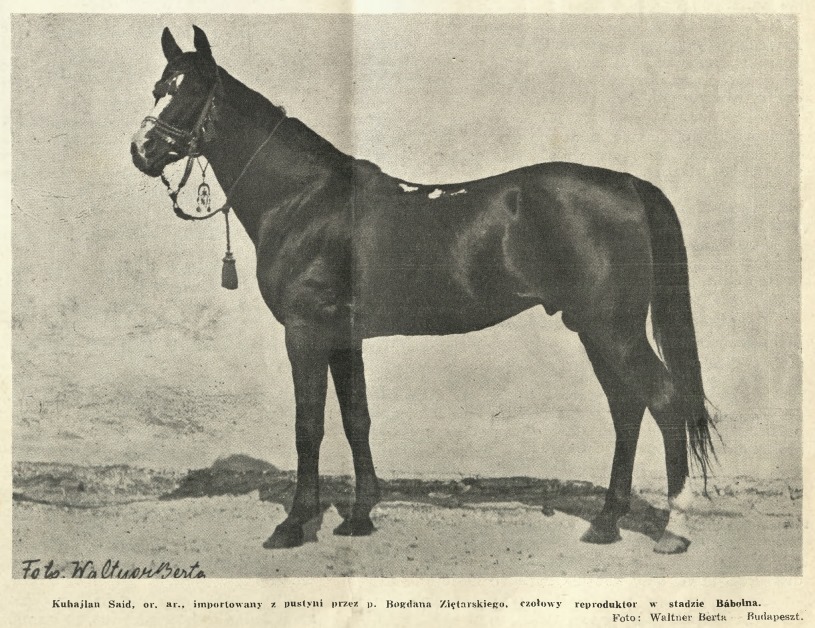Kuhaylan Zaid, desert bred import to Hungary

[My dashboard tells me this is blog post number 2000 on Daughters of the Wind, after more than eleven years of blogging]
Marta Ulan has a page on Facebook where she shares photos of foundation horses. Not sure what the source is for this nice photo of the foundation stallion Kuhailan Zaid, the desert-bred import to Babolna. He was purchased by Carl Raswan and Bogdan Zientarski in 1931 from the Wuld Ali Bedouins. Kate McLachlan pointed me to this photo.
That’s a good one! Heading for FB to check it out.
Guys: I hate to nitpick.. But Kuhaylan Zaid was actually imported to Babolna. Years ago in one of the Al Khamsa directories Joe Ferris ( i think) reprinted a letter from Tibor von Pettko de Szandter( sp) to Carl Raswan thanking him for Kuhaylan Zaid & suggesting plans to get a couple of fillies and a young colt from the desert as well.
It also quite true that a bunch of his colts and fillies were exchanged with some of the Polish Farms as well as other eastern European remount farms. Von Szandter bred 28 mares to him the first year he was there. Oh if only there were more Asil stock left from him Haify, and Afas..
best
Bruce Peek
In general, any time I see the words “desert bred import” next to the word Poland, I am highly skeptical. Do we know anything more about the origin of this particular horse?
Lyman, this one is bona fide. Bogdan Zientarski bought him straight from the Wuld Ali Bedouins in 1931. We know his strain, his marbat, and I believe there is even a hujjah, like Kuhailan Haifi and Kuhailan Aafas.
Wow! That’s pretty rare.
Carl Raswan and Zientarski were sticklers for authentication. It was also the last shopping trip to Arabia. By then, there was more awareness about written documentation..
Congratulations on two thousand posts!
The one thing that strikes me every time I look at this photo of Kuhailan Zaid is just how sturdy he is, particularly those fore cannons – I guess that is what that good flat bone all the nineteenth and early twentieth century Arabian aficionados wrote about looked like. I do like as well the pricked, alert ears and the bright eye – he’s aware of what is happening around him, but not concerned, which gives an inkling of his personality.
Please don’t take this wrongly, as I am only referring to the stance, but what Kate just said made me realize that the pose is so similar to that of the photo labeled El Emir.
You are absolutely right, Jeanne. A fascinating comparison.
I’ve always admired this horse.
Also, is it too much to hope for that one of our fantastic researchers unearths a previously unknown photo of El Emir?